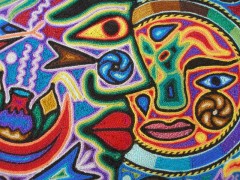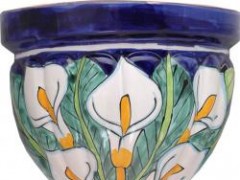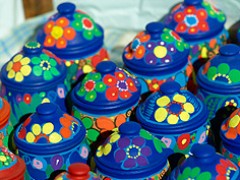Back to list of articles



|
Artesania in Mexico
Unlike many other art forms, artesania is primarily based on creating beauty within everyday, utilitarian items.
Mexican folk art contains influences from many cultures including pre-Hispanic, European, and in some cases, such as the pottery of Puebla called Talavera, Asian and Arabic design elements. And folk art has been a base influence for some of the most renowned and sophisticated artists in Mexican history, including Diego Rivera, Frida Kahlo and Rufino Tamayo, who were at the forefront of the post-revolutionary movement that linked the arts and cultural identity in Mexico. This strong relationship between artesania and the Mexican identity continues today in not only the culture of Mexico but in the way that Mexico is promoted as a destination and country throughout the world.
In the states of Jalisco and Nayarit, where Puerto Vallarta and Riviera Nayarit are located, there are excellent examples of folk art from the Huichol indigenous tribe, which dates back for centuries in the Banderas Bay region. Huichol folk art is characterized by its colorful decoration and symbols, and use of beading and yarn work.
Puerto Vallarta is considered the city with the second largest number of important art galleries in Mexico after the capital city and there are many locations in the downtown core of Vallarta where you can see indigenous artesania along with the work of world famous artists such as Jose Clemente Orozco and Sergio Bustamante.
|
|
Artesania, or Mexican folk art, is complex and varied category which includes ceramics, wall hangings, paintings and textiles.
|
|
For more information on art galleries in Puerto Vallarta and Riviera Nayarit, visit your Luxury Beach concierge.
|
|
|
|
|

